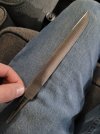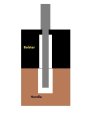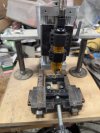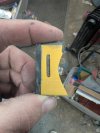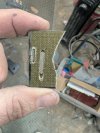- Joined
- Sep 3, 2015
- Messages
- 257
My brother and I are working on this knife for my dad's birthday. I'm doing the blade end of things, and he's going to handle the handle. He's thinking to use a block of walnut, but he wants to drill a small hole in the block, then heat up the tang of the knife enough to "burn" its path into the block. He says he's seen online knife makers doing this, but I'm concerned it will ruin the temper and/or just not work out the way he thinks it will. Any thoughts?
Thanks!
-Bo
Thanks!
-Bo

